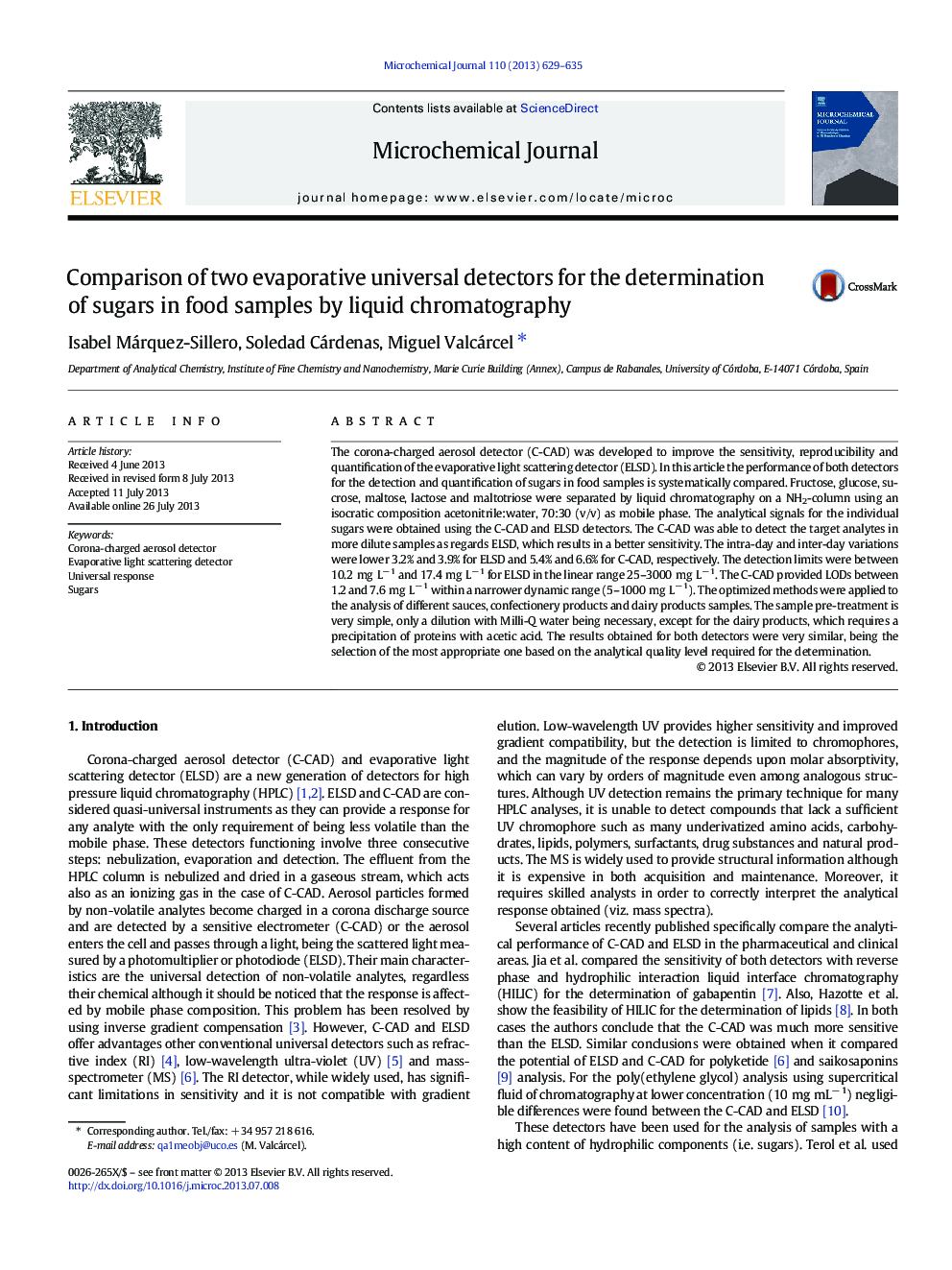| Article ID | Journal | Published Year | Pages | File Type |
|---|---|---|---|---|
| 7644089 | Microchemical Journal | 2013 | 7 Pages |
Abstract
The corona-charged aerosol detector (C-CAD) was developed to improve the sensitivity, reproducibility and quantification of the evaporative light scattering detector (ELSD). In this article the performance of both detectors for the detection and quantification of sugars in food samples is systematically compared. Fructose, glucose, sucrose, maltose, lactose and maltotriose were separated by liquid chromatography on a NH2-column using an isocratic composition acetonitrile:water, 70:30 (v/v) as mobile phase. The analytical signals for the individual sugars were obtained using the C-CAD and ELSD detectors. The C-CAD was able to detect the target analytes in more dilute samples as regards ELSD, which results in a better sensitivity. The intra-day and inter-day variations were lower 3.2% and 3.9% for ELSD and 5.4% and 6.6% for C-CAD, respectively. The detection limits were between 10.2 mg Lâ 1 and 17.4 mg Lâ 1 for ELSD in the linear range 25-3000 mg Lâ 1. The C-CAD provided LODs between 1.2 and 7.6 mg Lâ 1 within a narrower dynamic range (5-1000 mg Lâ 1). The optimized methods were applied to the analysis of different sauces, confectionery products and dairy products samples. The sample pre-treatment is very simple, only a dilution with Milli-Q water being necessary, except for the dairy products, which requires a precipitation of proteins with acetic acid. The results obtained for both detectors were very similar, being the selection of the most appropriate one based on the analytical quality level required for the determination.
Related Topics
Physical Sciences and Engineering
Chemistry
Analytical Chemistry
Authors
Isabel Márquez-Sillero, Soledad Cárdenas, Miguel Valcárcel,
